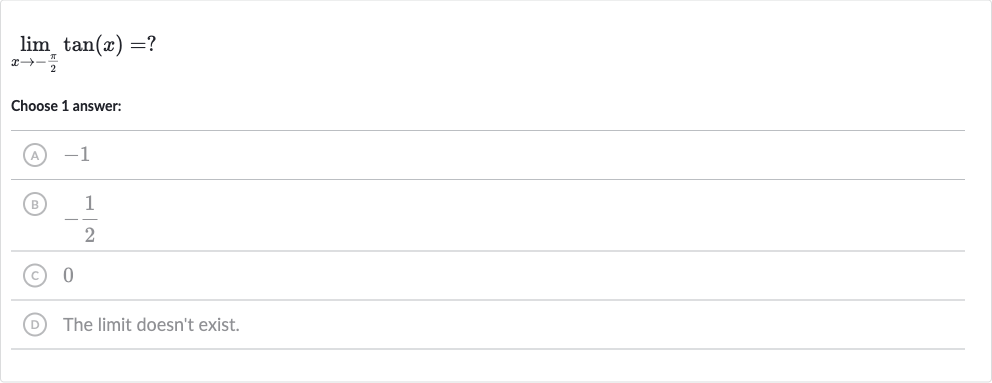Full solution
Q. Choose answer:(A) (B) (C) (D) The limit doesn't exist.
- Step : Determine the function and point of interest: We need to find the limit of the function as approaches . The tangent function has a period of , and it is known to have vertical asymptotes (where the function is undefined) at odd multiples of . Since is one such point, we expect the limit to not exist because the tangent function approaches negative infinity from the right and positive infinity from the left of .
- Step : Analyze the behavior of sine and cosine functions: To confirm our expectation, we can consider the behavior of the sine and cosine functions separately, as . As approaches , approaches and approaches . The cosine function approaches through positive values from the right of and through negative values from the left of .
- Step : Observe the sign change of cosine function: Since the cosine function changes sign around , the tangent function will have opposite behaviors on either side of . From the right, will approach negative infinity, and from the left, it will approach positive infinity. This confirms that the limit does not exist because the left-hand limit and the right-hand limit are not equal.
- Step : Determine the behavior of tangent function: Therefore, the correct answer is (D) The limit doesn't exist, because the function does not approach a single finite value as approaches .
More problems from Power rule
QuestionGet tutor help
QuestionGet tutor help
QuestionGet tutor help
QuestionGet tutor help
QuestionGet tutor help

